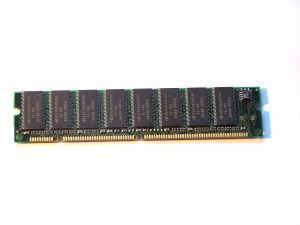SRAM (Static Random Access Memory)
SRAM, or Static Random Access Memory, is a type of memory device that stores accessed files and commands in a semi-permanent chip that only empties itself of stored data when it is no longer being powered, i.e. when the computer is unplugged or turned off. SRAM differs from DRAM, or Dynamic Random Access Memory, which stores data even when the computer is unplugged, but must be refreshed regularly to empty old data. While SRAM is highly efficient and very convenient for quick access, it is mostly only used to store files that are repeatedly accessed or modified, while DRAM is used to store memory of the vast majority of files and folders.
Applications
SRAM is commonly used for high-speed, high-quality applications that must have data delivered immediately in order to operate. For example, programs often use SRAM to maintain daily functions. In contrast, files and folders accessed by programs, as well as non-essential drives, generally use DRAM.
Advantages
SRAM is advantageous because it provides programs with immediate access to files and folders that they have accessed recently, especially program files. SRAM is also advantageous because it can be used in conjunction with DRAM, providing users with both fast, short-term memory and reliable, long-term memory. Additionally, SRAM can be replaced or upgraded by replacing either a single SRAM chip or an entire SRAM block.


Comments - No Responses to “SRAM (Static Random Access Memory)”
Sorry but comments are closed at this time.